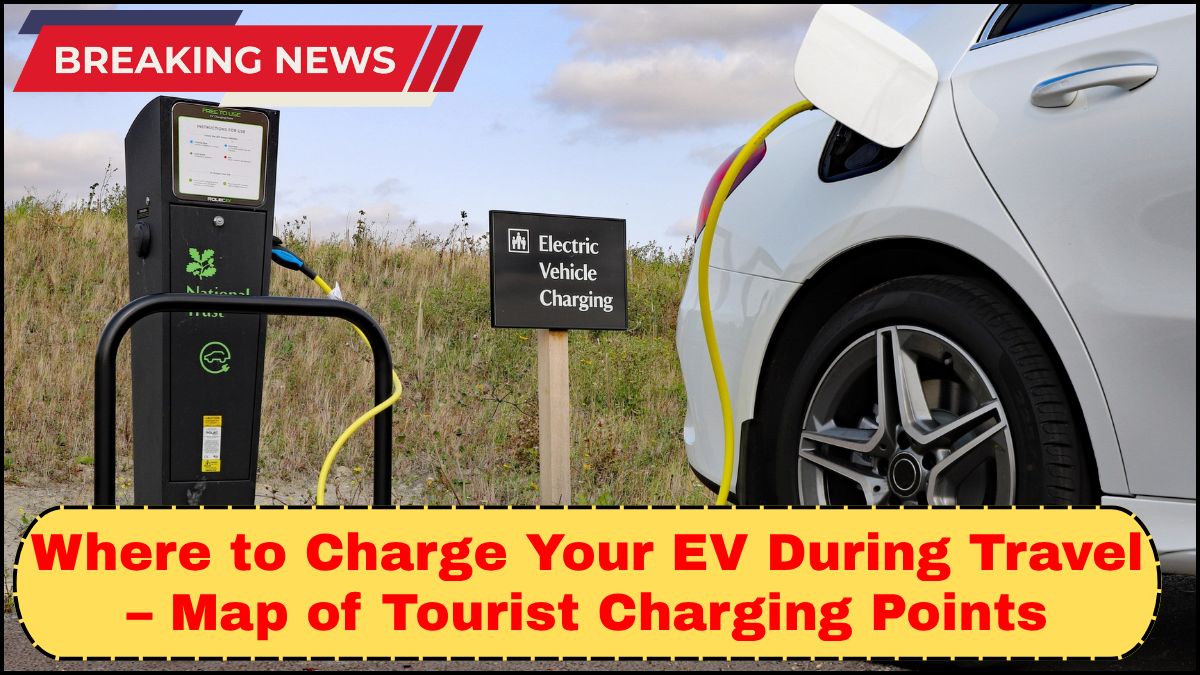Electric vehicle (EV) adoption is accelerating fast, and with it comes a growing need for convenient, accessible charging infrastructure—especially when you’re on the road. Whether you’re heading to a national park, coastal getaway, or historical landmark, knowing where to find charging stations near tourist spots is essential for a stress-free and enjoyable journey.
This guide walks you through how to locate EV charging points during travel, tools for efficient trip planning, and what to consider when charging near high-traffic tourist areas.

The Rise of EV Travel and Tourist Charging Infrastructure
Tourism and sustainable transportation are converging. Governments and private sectors are responding by expanding the EV charging network to popular travel destinations. From city centers to remote hiking trails, more tourist-friendly locations now feature Level 2 and DC fast chargers to support the growing number of EV-driving visitors.
For example, Yosemite National Park, the Grand Canyon, and Niagara Falls all now offer publicly accessible EV chargers. This means you can explore nature without worrying about range anxiety.
How to Find Charging Stations Near Tourist Spots
The first step in EV travel planning is identifying where you can recharge while sightseeing. Fortunately, several digital tools make this easy:
1. EV Charging Apps
Apps like PlugShare, ChargePoint, A Better Route Planner (ABRP), and Zap-Map (UK) show real-time locations of chargers, availability, connector types, and user reviews. You can filter for amenities, such as nearby restaurants or restrooms—handy when you’re waiting for a full charge.
2. Automaker Navigation Systems
Most modern EVs come with built-in navigation systems that highlight charging stops along your route. Tesla, for instance, integrates Superchargers into its route planner and adjusts trip time accordingly.
3. Google Maps Integration
Google Maps now includes EV charger locations and even indicates whether they are currently in use. Typing in “charging stations near tourist spots” in your travel area will bring up nearby options.
4. Tourist Destination Websites
More travel and tourism websites now include information about onsite EV charging. Museums, national parks, wineries, and resorts often list charger types and availability. This can give you a major planning advantage.
Strategic Charging: Plan Ahead for High-Traffic Zones
When traveling to popular destinations, timing and location are everything. Tourist-heavy areas can experience charger congestion, especially on weekends and holidays. Here are some planning help tips to keep you moving:
-
Charge Overnight: Many hotels now offer guest-only EV chargers. Booking a stay that includes charging not only saves time but guarantees your vehicle is ready for the day ahead.
-
Top Off While Sightseeing: Choose chargers near attractions where you’ll naturally spend time—zoos, theme parks, or heritage sites. This lets you charge without altering your itinerary.
-
Avoid Peak Hours: Charging stations near major landmarks can be busy between 11 a.m. and 3 p.m. If possible, plan your charging stops during breakfast, dinner, or late evening.
-
Bring Multiple Charging Memberships: Some stations require specific apps or RFID cards. Having accounts with providers like EVgo, Electrify America, and ChargePoint ensures broader access.
Types of Chargers You’ll Encounter
Not all charging stations are created equal. Here’s a quick breakdown of what you’re likely to find near tourist areas:
-
Level 2 Chargers: Most common near hotels, shopping areas, and city centers. Ideal for 3–8 hour stays.
-
DC Fast Chargers: Found along highways and some busy tourist destinations. Can recharge 80% in under an hour.
-
Tesla Superchargers: Exclusive to Tesla vehicles, located strategically across tourist corridors.
Map Resources for EV Tourists
To simplify your trip planning, use dedicated EV maps that highlight chargers near attractions. Here are a few resources to bookmark:
-
PlugShare’s Map Layer for Attractions
Enables you to see chargers specifically located near entertainment, nature, or cultural hotspots. -
A Better Route Planner (ABRP)
Tailored for long-distance EV travel, offering optimized routes with suggested charge stops at or near tourist destinations. -
National Park EV Charging Maps (U.S.)
Websites like the National Park Service or third-party travel platforms often offer downloadable maps of park EV infrastructure.
Final Thought: Make Charging Part of the Experience
Charging your EV during travel doesn’t have to be a hassle—it can be an integrated, even enjoyable part of the journey. Whether you’re sipping local coffee while your car charges in a mountain village or exploring a historic district with an EV charger in the public lot, smart planning ensures you maximize both your battery and your travel time.
FAQs
Q1: Can I charge my EV at most tourist attractions?
Not all attractions have chargers yet, but availability is growing fast. Always check online in advance or call the location.
Q2: Are charging stations near tourist spots more expensive?
Rates vary. Some are free (especially at hotels or public buildings), while others may charge a premium, especially fast chargers.
Q3: What should I do if all chargers near a destination are occupied?
Have a backup location ready using apps like PlugShare. Also consider less crowded charging options in nearby towns.
Q4: Do I need special equipment to charge while traveling?
Most public chargers have cables, but bringing your own Level 1 or Level 2 cable is smart. Also ensure you have app access or RFID cards for multiple charging networks.
Q5: Is it safe to leave my car charging while I tour nearby?
Yes, especially in well-lit public or commercial areas. Still, take basic precautions: lock the vehicle and don’t leave valuables visible.
click here to learn more